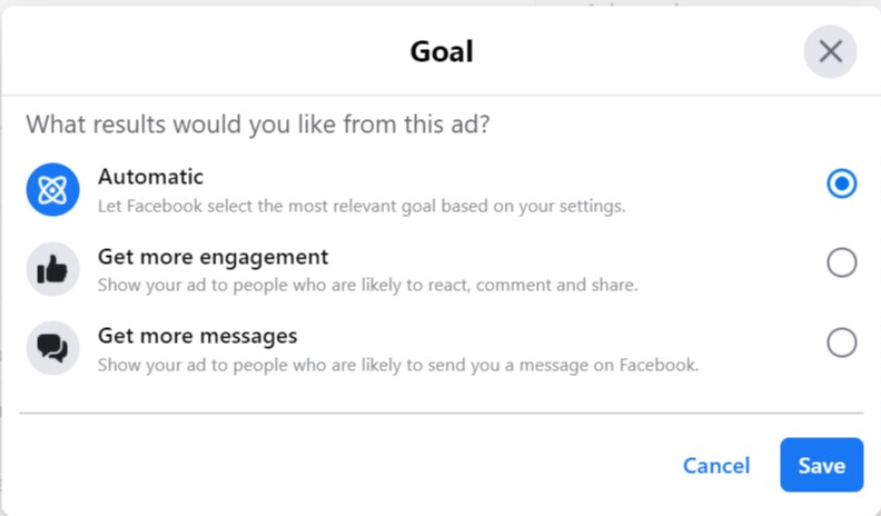How to advertise tutoring?
What most people tend to be asking with this question is really about “tutor marketing.” In other words, “How can I increase the visibility of my business so I can grow my clientele?”
While many people tend to use the terms interchangeably, advertising is a paid channel while marketing is more organic. Advertising is really also a subset of marketing.
That’s why we’ll cover both advertising (paid strategies) and marketing in this blog post.
How to Increase the Visibility of Your Tutoring Business (Tutor Marketing)
1. Implement a Referral Program
Referral marketing has to be one of the most effective marketing tools out there when it comes to how to advertise tutoring the most effectively. The reason why it’s so effective is because people trust the recommendations of people they know personally.
Indeed, research by Nielsen shows that recommendations from friends and family remain the most credible form of advertising among consumers, with 83% saying that they trust these recommendations.
While a lot of your clients will naturally refer you to others without having to ask, you’ll see a larger benefit by actually incentivizing them to do so. For instance, you could offer 25% off their next session or another similar attractive offer.
2. Promote Yourself in Local Facebook Groups (“Parent” Groups, University Groups, Etc.)
A great avenue for promoting your tutoring business is via various local Facebook groups where potential students might be. If you’re tutoring elementary-aged students, you’ll find a lot of your target audience in Facebook groups for parents, for instance.
Similarly, if you’re tutoring university students, you’ll find your target audience in university groups.
This can be a great tool for tutor marketing and ultimately connecting directly to people who are highly likely to have an interest in your services.
3. Optimize Your Google My Business Listing + Increase Reviews
We’re going to assume that you already have a Google My Business listing (if not, you should definitely get one ASAP). Google My Business is critical when it comes to how to advertise tutoring and tutoring marketing.
But are you also optimizing your listing so that you appear at the top of the search results?
Reviews are an important part of keeping your listing active so that you appear near the top. But they are also an important part of influencing buying decisions. At the heart of it is social proof. The more reviews you have (and the higher your rating), the more trust there is in your business.
Read more about how to optimize your listing here.
4. Do Content Marketing (And Use Pinterest!)
Content marketing is important regardless of what stage you’re at in your tutoring business journey.
Whether you are a sole proprietor or you manage multiple locations, content marketing – i.e. providing helpful content for your target audience – is a critical part of generating traffic and leads.
Depending upon the resources you have, this could mean posting helpful content on social media or your website in the form of blog content.
While social media platforms like Facebook and Instagram are often the go-to, we really want to draw your attention to Pinterest! This is because of the massive audience that pins educational resources – and parents in particular.
In short, Pinterest is an underutilized but effective platform for connecting to your relevant target audience.
5. Start Using a Scheduling Software (With Built-In Marketing Features)
When it comes to how to advertise tutoring and tutor marketing, you might not initially think of scheduling software as a way to generate clients.
But hear us out: a good scheduling software is much more than a scheduling software. It should also have a variety of built-in marketing tools that can actually increase the visibility of your business (it also offers a variety of other tools, such as a Point-of-Sale, a Client Relationship Management [CRM] tool, and more).
Here are a few ways that scheduling software can market your business:
- By Adding a “Book Now (Schedule)” Button to your Google My Business Listing = 86% More Bookings. It’s called “Reserve with Google,” and it gives potential clients the convenience of booking your services straight from Google. Not only do today’s consumers want to book online but they also tend to book after hours. Scheduling software effectively keeps your business open 24/7.
Take a look at tutoring centres in Vancouver, for instance. Wouldn’t you prefer to book a session right away straight from Google (i.e. with Sealy Tutoring) than having to go through the hassle of calling and all the back and forth before you actually get anywhere?

Here’s the thing: we know very well that millennials don’t want to pick up a phone! We also know that research shows that nearly half of consumers want the option to book appointments online. While this study pertained to medical appointments, the entire scheduling software industry is growing at an incredible rate and ultimately points to the fact that online appointments are on the rise.
- Add Book Buttons to Social Media and Your Website. Again, it’s all about meeting your clients wherever they are! Scheduling software makes it possible to add book buttons to your social media accounts and website for clients to book you through.
Scheduling software will also send email and SMS reminders to your clients so you reduce no-shows.
With Yocale, you can also start FREE. Feel free to read about the benefits of online scheduling software here.
How to Advertise Tutoring (Paid Ads)
When it comes to how to advertise tutoring, some channels are better than others. Here are some of the best options:
1. Boosted Posts
Now, a word of caution: a lot of people will tell you they’re not worth the money. And there is some truth to that. But hear us out first.
While boosted posts are often the go-to option for those who want to dip their toes into paid ads because you can create ads so easily, we believe that boosted posts can still be a good option – but only under certain circumstances.
When boosting a post, you can choose three goals: automatic, get more engagement or get more messages. You can also choose who you want to show your boosted post to. This is the important part.


If you choose to boost your post to a new audience (instead of your existing followers), it’s important to recognize that boosting a post is not likely to result in a new client. The reason is because much of this audience is too “cold” – that is, not necessarily interested in your services. While it may result in new followers, which will certainly add credibility to your Facebook page, the ad is not likely to generate a meaningful end goal.
But if you choose to show your boosted posts to your existing audience, who already have an interest in your services, this can be a great strategy. For instance, let’s say you wanted to promote your referral program. Boosted posts are a great way to get more eyes on your offer.
Here’s the thing: the average organic reach for a Facebook post is only 5.2%. So if you want to increase the visibility of your posts, boosted posts can help.
Boosted posts can also be a good testing ground to measure how effective ads created via Ad Manager will be. If a boosted post gets a lot of traction, you may want to consider running an ad via Ad Manager.
2. Google Pay-Per-Click (PPC) Ads
The great thing about Google PPC ads is that they capture people who are actively looking for tutoring services at that very moment.
So when people enter “tutoring vancouver” into their search bar, one of the first results they’ll see is your ad.


The key is to go after long-tail keywords (i.e. more specific keywords) instead of generalized keywords, which are very competitive (and costly!). Long-tail keywords are more specific and low cost but because they are more specific, they tend to result in more conversions.
One last tip: don’t make the mistake of not using exclusions in your ads. You may be tempted to show your ad to everyone, but the more specific you are with who (and who not) you’re targetting, the more effective your ads will ultimately be.
3. Instagram Ads
The benefit of advertising on Facebook and Instagram is that you can advertise to a highly targeted audience. For instance, you can filter audiences based on their location, interests, age and more.
But because visuals are so key on Instagram, you really need to make sure that your images create that visual impact.
4. Facebook Ads
While it is likely that a large segment of your audience (such as parents) could be on Facebook, Facebook ads are getting more expensive, and generating less clicks, as time goes on.
That’s not to say that you should avoid Facebook ads (that isn’t the case at all!), but some strategies are better than others.
For instance, for Facebook ads to be most effective, it’s best to show ads to people who have already visited your website (i.e. for you to do remarketing) and bring them back to your site instead of showing them to an entirely new audience.
Similarly, you can try lookalike audiences, which means you can take your existing customers who bought from you and show others who are just like them your ads.
Keep in mind that you can’t always expect that your first ad will generate results right away. Often, it’s a good idea to drive potential clients to an educational piece of content first (such as a blog post) and then run a second ad asking for a more direct request (such as a sign-up, etc.).
You can also see what kinds of ads other tutoring businesses are running via Facebook’s Ad Library.
Wrapping It Up
When it comes to how to advertise tutoring and tutor marketing, we want to hear from tutors out there: what has worked for you and what hasn’t? Let us know in the comments below!




